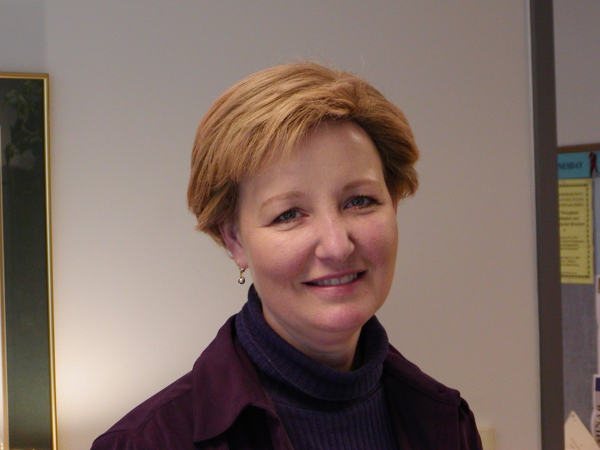 The Susan Roberts Dubay Endowed Lecture series in the UAB Department of Microbiology has been inviting world-class scientists to share their knowledge with UAB audiences since 2015; however, the impact of the lecture series started well before then.
The Susan Roberts Dubay Endowed Lecture series in the UAB Department of Microbiology has been inviting world-class scientists to share their knowledge with UAB audiences since 2015; however, the impact of the lecture series started well before then.
Twenty-something Susan Roberts moved to Birmingham to start her career in medical research in 1986 after graduating from Duke University. She started at UAB in the lab of David Briles, Ph.D., professor emeritus in the Department of Microbiology, as a senior lab tech. Susan went on to join the lab of Eric Hunter Ph.D., now-professor in the Department of Pathology and Laboratory Medicine at Emory University, two years later in 1988.
“She came in and took control of the lab almost immediately, and in the very best of ways,” said Hunter, who was a professor in the UAB Department of Microbiology at the time. “She took responsibility for things. She was a real people person.”
Hunter, who was the founding director of the UAB Center for AIDS Research in 1989, explained that Susan’s skillfulness in the lab and congenial personality led her to quickly become chief technician in his lab, which was studying the molecular events involved in retroviral assembly—including that of HIV.
During that time, Charles Turnbough, Ph.D., professor emeritus in the UAB Department of Microbiology, befriended Susan—a friendship that was not only strengthened by their scientific drive but also a love of basketball.
“She was a very gentle human being, very gentle – except when she got on the basketball court,” joked Turnbough, who coached Susan’s intramural basketball team and attended UAB basketball games with her.
Susan’s 16 years in Hunter’s lab led to research efforts including co-authorships on nine peer-reviewed publications and 17 abstracts for national and international meetings, which helped advance the scientific knowledge necessary for the development of an effective HIV vaccine. She became a role model for students and colleagues in the lab, and her engaging personality carried across both her work and personal life.
It was also in Hunter’s lab that Susan met her husband, then-graduate student John Dubay, M.D., Ph.D., associate professor in the UAB Division of Hematology and Oncology. The two married and had their first of two daughters before Susan was tragically diagnosed with an inoperable form of brain cancer. Her colleagues recall her resilience to the news as she continued her work and raising her two daughters.
“She was the bravest person you could think of,” Hunter said. “You would never have known meeting her in the lab during those years that anything had affected her life profoundly.”
“She just kept going,” Turnbough added.
Susan passed away in February 2007, shortly after she left UAB, and the family moved to Tuscaloosa. In an effort to perpetuate the impact Susan solidified during her time at UAB, an endowment was graciously established by Susan’s husband, John, as well as Susan’s brothers, Dr. John R. Roberts, and James D. Roberts, along with other friends and family, which has led to the Susan Roberts Dubay Lecture series.
Since then, the series has brought lecturers offering a range of scientific perspectives to graduate students and the greater UAB community, serving as an extension of Susan’s positive influence.
“I think it’s always important to recognize the role that anybody can play in enhancing the environment at an institution,” Hunter said. “And I think that’s my recollection of Susan—is that she was the kind of person that made the environment better—and that made other people’s lives better, just by the way she treated people and regarded people.”
The UAB Department of Microbiology invites you to attend the 2024 Susan Roberts Dubay Endowed Lecture on Wednesday, Feb. 14 at 3 p.m. in Cudworth, Room 102. Michael S. Diamond, M.D., Ph.D., Herbert S. Gasser Professor at Washington University’s School of Medicine in St. Louis, will be presenting “Alphavirus receptor interactions; new insights into the first step in the virus infection cycle.”